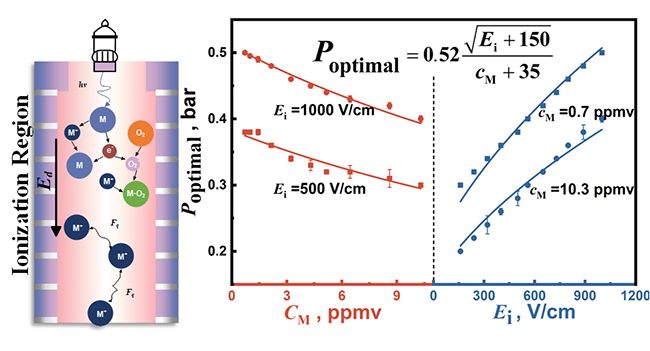Photoionization (PI) is an efficient ionization technique, hyphenating to Ion Mobility Spectrometry (IMS), which has been widely employed in various on-site analysis fields such as clinical diagnosis, food quality control, environmental pollutant monitoring, and national security. However, ion loss caused by ion recombination under atmospheric pressure leads to decreased sensitivity and linear dynamic range of PI-IMS.
Recently, a research group led by Prof. LI Haiyang from the Dalian Institute of Chemical Physics (DICP) of the Chinese Academy of Sciences (CAS) conducted a study on the response profile of PI-IMS under different pressure conditions based on the independently developed PI-IMS.
The researchers quantitatively analyzed the factors causing ion loss, like ion recombination and space charge, to enhance the signal intensity and linear dynamic range of PI-IMS. Furthermore, they revealed factors influencing the PI-IMS response would also benefit the applications of other chemical ionization sources in IMS or mass spectrometry (MS). The study was published in Analytical Chemistry.

The variation trends of the optimal pressure (Poptimal) versus analyte concentration and the electric field (Image by XU Yiqian)
The researchers developed variable pressure PI-IMS to investigate the signal response of PI-IMS for toluene by varying its working pressure from 1 to 0.1 bar.
They found that ion recombination and space charge were the primary factors contributing to ion loss under high-pressure and low-pressure conditions. They derived a simplified theoretical equation taking ion recombination as the primary ion loss factor to link the optimal pressure with analyte concentration and electric field.
Compared to the ambient pressure, they found that PI-IMS at 0.4 bar provided a signal intensity increment of over 400% for 0.716 ppmv of toluene, and the linear dynamic range was also expanded over two times.
The above study was supported by the National Natural Sciences Foundation of China and the National Key Research and Development Program of China.